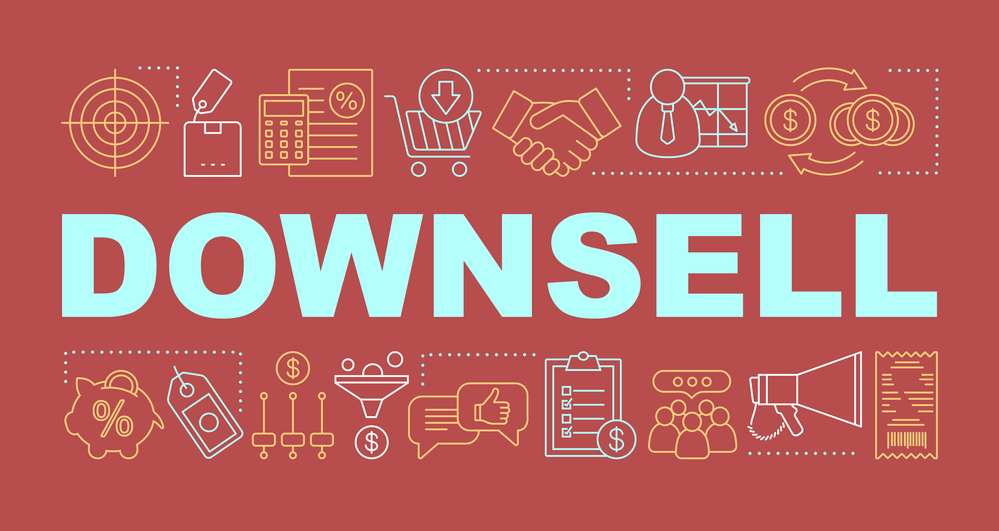
3 Simple Truths to Decrease Chargebacks AND Increase Conversions
May 6, 2022 2 minutes
3 Simple Truths to Decrease Chargebacks AND Increase Conversions
Welcome to Part 2 of our FAQ with Satwant Phull on his podcast, The Payments Show Podcast.
In Part 1, we talked about the shocking truths of high-risk merchant accounts and how to prevent (or save) your business from getting shut down, suspended, or frozen.
Here, we’re taking things a step further and discussing what to look out for when considering chargebacks and what you can do to increase conversions.
You can check out the podcast on Spotify, Apple, and Stitcher.
1. The Chargeback Threshold You Should Never Reach
First thing’s first: we’re talking about the chargeback criteria set by Visa. Mastercard and other credit card companies have similar criteria, albeit slightly different. In general, if you can aim to stay below Visa’s threshold, you’re all good.
Visa sets the rules. Every credit card processor that allows transactions through Visa’s network has to abide by Visa’s rules. The same goes for any credit card network (Mastercard, American Express, Discover).
0.9% and 100 Are the Magic Numbers
You need to remember both numbers, not just one or the other.
What they refer to are:
1. Having no more than 0.9% chargeback-to-sales ratio, AND
2. Having no more than 100 chargebacks per month.
Even if you have a ratio of 0.7% but have 105 chargebacks, Visa will flag your account. Or if you have 20 chargebacks but a ratio of 2%, that’s a flag. You need to stay under both thresholds to prevent chargeback shutdowns.
Your Processor Also Has Chargeback Criteria
As if Visa’s criteria weren’t stringent enough, the processor you use will also have its own rules which might be the same or lower than Visa’s. For example, a monthly chargeback number of 95 or a ratio of 0.8%. It depends on the processor.
If you regularly experience chargebacks hovering closer to Visa’s thresholds, then work with a processor that mirrors Visa’s criteria.
Stripe Is Not a Processor
This is also why Stripe is so cut-throat about chargebacks, cardholder disputes, high-risk businesses, and sales volumes.
It’s why Stripe is so cutthroat about chargebacks, high-risk businesses, and sales volumes. Stripe has one master merchant account and allows businesses to use part of that with a sub-merchant account. The chargeback ratio doesn’t apply individually for each business using Stripe, it’s for all Stripe businesses.
Stripe has a different rule than the 0.9%, 100 set by Visa (they would have blown way over this every month). But what Stripe does is compares your typical chargeback quantity with your current number. So, if you typically have 3 chargebacks per month and for some reason you now have 6, Stripe will shut you down.
A lot of our clients are former Stripe users who have been shut down. The best route is prevention—you don’t want to get shut down and then find a solution in your panic. You want to prevent a shutdown from happening in the first place, and the best way to do that is by having your own merchant account.
With your own merchant account, you don’t have to worry so much about the month-over-month ratio. If you suddenly spike from 3 to 6 chargebacks, it’s not such a big deal.
2. Don’t Ignore Your Payment Descriptor
How many times have you signed into your bank or credit card statement and seen a charge you didn’t recognize? What was your reaction?
We’re willing to bet you panicked, thought there was a mistake (e.g., stolen card, charged too much), and you wanted to dispute it.
Cardholders go through this far too often, and now it’s far too easy and habitual that they dispute the transaction instead of research it.
The fact is that, while credit card fraud is real, friendly fraud from customers disputing genuine purchases is much more common. By fixing your payment descriptor, you can change the way customers see and dispute charges from your store. Your descriptor is a great chargeback fraud prevention measure.
Merchant Accounts Allow You to Set Up Custom Descriptors
When you have your own merchant account, you can set your own descriptor. You have 22 characters for the descriptor and 13 characters that can be used for the location. Make sure you put your business name in the descriptor, don’t leave it as some random string of characters. Your company name needs to be front and center.
If you’re an online shop, the best thing to put in the location section is your phone number.
For e-commerce businesses, adding a location can actually harm you in the way of chargebacks and customer disputes. Customers can see that, call the issuing bank, and say, “I’ve never been to Miami, some fraudster must be using my card.”
Even though it isn’t a fraudulent transaction, the customer doesn’t know that.
If you add your business’ phone number, the customer can call you when they have questions regarding the transaction instead of their bank. A refund is always better (and cheaper) than a chargeback.
If you don’t have a phone number, add a URL. The purpose is to turn that section into a fast and easy way for customers to either understand what store the purchase is from so they can have an a-ha moment, or so they can contact you and request a refund. Whatever contact information you have, put it there.
This is one of the easiest chargeback prevention methods any business can do, even on Stripe.
Always remember that refunds are easier, faster, and way less expensive than chargebacks. Anything to avoid chargeback fees is worth it. Work on your return policy, too.
Yes, We Encourage New Business Owners to Start Out with Stripe
Contrary to what you might believe, we actually advise startups and entrepreneurs to get their business up and running with a service like Stripe initially.
Until you start processing $50k per month, aggregators are a fast way to get some processing history. You don’t need to worry about adding value to your bottom line and following the tips and tricks we often share because your concern is getting your small business running.
Because opening a high-risk merchant account takes about 2 weeks, it’s faster to open an account with Stripe.
Stripe won’t be keen to shut you down until your sales volume starts to increase exponentially. But that won’t happen in the first months of opening your store.
When you start to approach $50k or something less, that’s when you need to look into opening a merchant account. You’ll have the payment processing history to back up your application and you’ll get an account open before fears about being MATCH-listed arise.
3. Target the Low-Hanging Fruit to Add a Few Percentages to Your Checkout Conversions
Now that you’re operating smoothly, you have chargebacks under control, and your payment processor and acquiring bank backs your business, you can start focusing on conversions.
Get Fresh Eyes on Your Sales Funnel
You need someone who doesn’t work with/for you to go through your sales funnel. Get a family member or friend to buy something from your site as a trial. Tell them to note when things really work and when things really don’t.
You already know how to navigate your own sales funnel. That’s why you need an unbiased view of how it works. The smallest details can really kill a sale.
An example Satwant gave goes back to the CD era. A business owner wrote “duplicates” on their site for customers to get a duplicate of the CD they’re purchasing. Yet people continued to write in asking how they can buy copies. And that was the problem. Once he switched the one, single word, “duplicate”, to “copy”, everything worked like a dream.
Understand Your Demographic
The customer experience needs to be designed for your target demographic in every way. You can’t slack off at the checkout page thinking you’ve already got the sale.
For example, we once worked with someone who’s audience was folks above the age of 55. By increasing the font size on the checkout page, that client saw a bump in sales.
You need to pay attention to the little things. Like making sure the credit card input box separates every 4 numbers so users can better avoid making mistakes. A frictionless experience always works better.
Understanding your demographic can also help you support or remove various payment methods fro your checkout page. Some businesses can run on debit cards, others use crypto. Most will need to support credit cards, and that means making sure your checkout is secured with 3D Secure, AVS (address verification service), and CVV (security code). These help with customer validation when making online payments.
Sell More of the Same
When it comes to upsells, don’t question it. A lot of people wonder what they should be upselling, but the best product to upsell is exactly what the customer is buying.
If the customer is getting a 3-month supply of weight loss supplements, sell them 6 months’ worth. You already know they want that product. Instead of making them come back in 3 months or risk chargeback disputes from the card issuer every 3 months when the transaction goes through (if it’s a subscription), put it in the upsell.
A High-Risk Merchant Account Serves 90% of Online Businesses
We can’t say it enough. Most online businesses can identify with a processor’s or aggregator’s definition of high-risk business. From your industry to card-not-present transactions.




